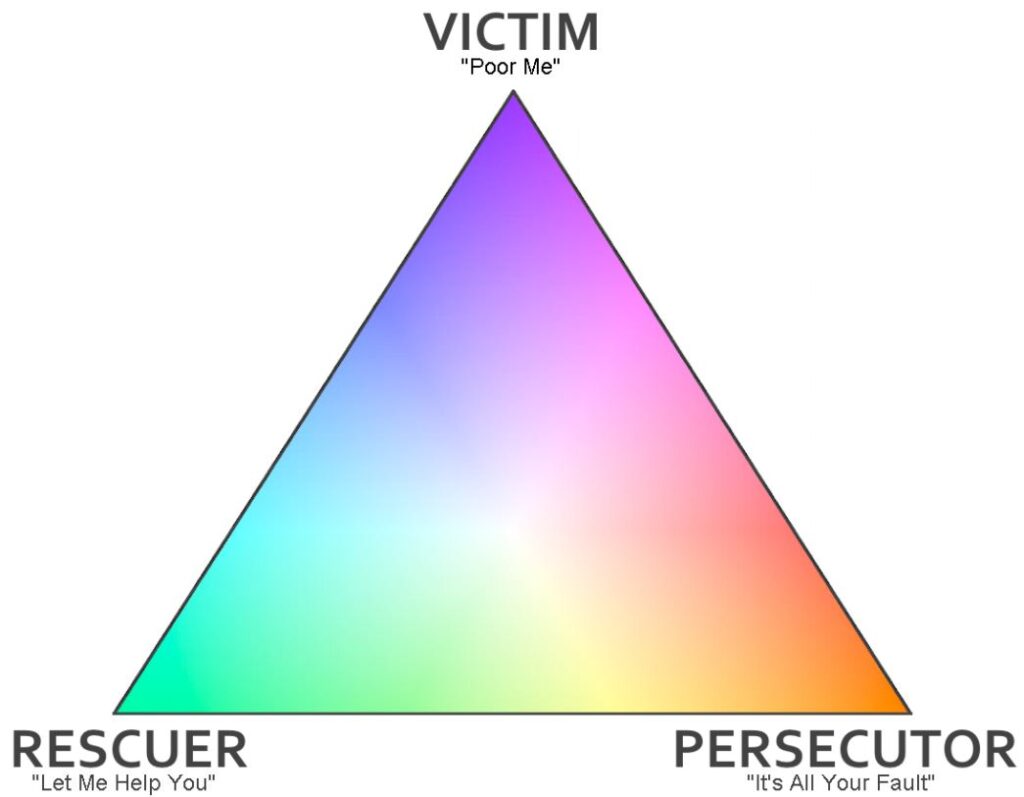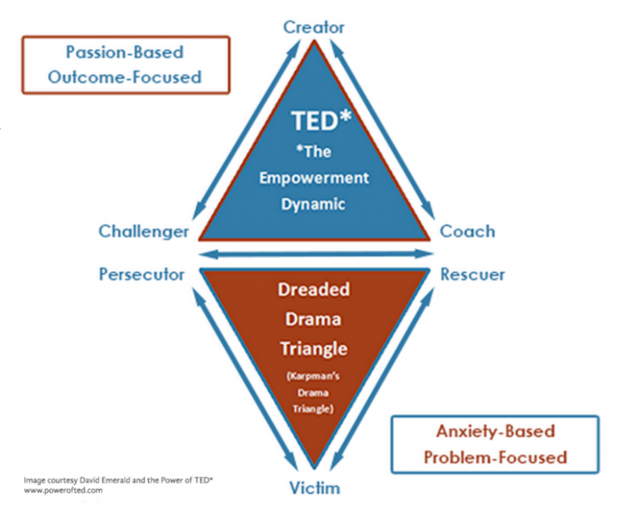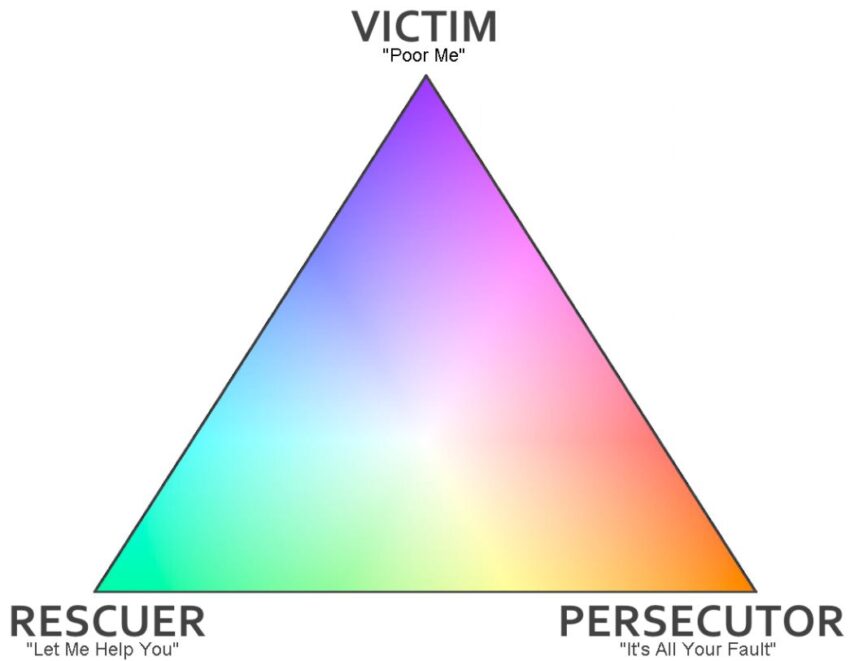Ever heard of the “Drama Triangle”, also known as the Karpman Drama Triangle. It is first coined by Stephen Karpman in 1961. The Drama Triangle is a social model of human interactions that show the destructive interactions that can occur on people that are in conflict. It is also a tool use in psychotherapy, most specifically transactional analysis.

The Drama Triangle models the connection between personal responsibility and power conflicts between people int the model. People that are stuck in the Drama Triangle tends to shift roles within it which are all destructive in nature. Once inside this triangle the person takes on roles that may or may not be true from who they really are.
There are three actors in the Drama Triangle namely: The Prosecutor, The Rescuer and The Victim
- The Victim (“Poor Me!”) – This person is the vulnerable “helpless” victim. The drama queens. They think that they are powerless and in no way in their mind able to get out in their bad situation. Victims validate that their pitiful situation is unsolvable. This means that they usually exaggerate their situation and create problems within their own minds. They have no initiatives, and they fail to realize that no one can save them but themselves and that they need to change their views of things. The Victim always blame others of their sufferings. They point their fingers to everybody else but themselves. They tend to be stuck and are waiting for a hero, the Rescuer to come.
- The Rescuer (“Poor You, let me help you!”) –This person is the Victim’s Knight in Shinning Armor. The one they are waiting for to save them in their hopeless scenario. The Rescuer knowingly or most of the time unknowingly do more damage than good to the Victim by making them dependent and encouraging them that it is OK to fail. This person of the triangle act to save the victim showing that they put effort in doing so. In return it gratifies their need to feel the “hero”, to feel someone of value. By doing so the Victim remains dependent to the Rescuer and never learn to stand in their own feet.
- The Prosecutor (“It is your fault”) – The prosecutor is the critical and blaming person of the triangle. The villain that nobody wants to admit being. To them, they are superior and looks down with no pity or remorse to the Victim. They do not help the victim and they even blame them for the scenario they are on.
People in the Drama Triangle find it hard escaping its roles. Some say that to escape it, you only need to realize that you are in one, identifies your role and then summon an unsurmountable willpower to escape it. That is not always the case so in 2015, Dr. David Emerald Womeldroff publish an alternate model called The Empowerment Dynamic Model which is TED for short.
While the Drama Triangle focuses on problem, TED focuses on the goals and positive development. In TED, the roles transform into the following:
- The Victim rise the to role of “Creator” – instead of focusing on the problem, the Creator focuses on the outcome. Instead of feeling stuck and helpless, the Victim realizes that he/she has the power to control his/her scenario as a self-empowered individual. They no longer exaggerate and create problems in their mind and they also stop blaming others. Only when we take responsibility in our own life, act and safeguard our minds can we progress forward.
- The Prosecutor becomes the “Challenger” – Instead of looking at the prosecutor as a blaming and criticizing a**hole, we take them in a more positive approach as a challenger that drives people forward.
- The Rescuer ascend to the ranks of “Counselor” – Instead of making the victim dependent the Councilor then coaches them to take responsibility in their own life and stand on their own feet.

References:
Dr. Karpman. Karpman Drama Triangle. Retrieve from the URL: https://www.karpmandramatriangle.com/
Remy Blumenfeld. December 2018. How to Escape The Dreaded Drama Tranlge. Retrieve from the URL: https://www.forbes.com/sites/remyblumenfeld/2018/12/07/how-to-transform-your-relationships-by-getting-creative/#296ef9cc7565
Wikipedia. Karpman Drama Triangle. Retrieve from the URL: https://en.wikipedia.org/wiki/Karpman_drama_triangle

